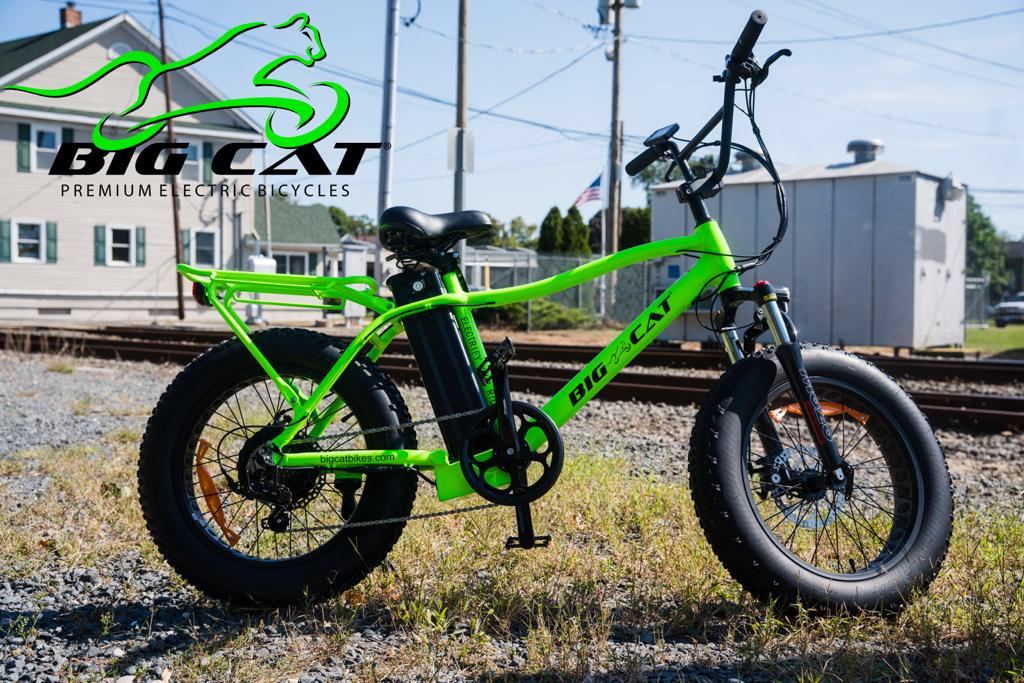
Fattening Up Your Maintenance Game: A Guide to Fat Bike Parts Maintenance and Upkeep
Ladies and gentlemen, hold on to your handlebars because we're about to take you on a journey through the world of fat bike maintenance. From the beefy tires to the burly frames, these bikes are built for adventure and can handle some serious terrain. But in order to keep your fat bike running at its best, it's important to know the ins and outs of its maintenance and upkeep.
In this article, we'll teach you how to fatten up your maintenance game and keep your fat bike in tip-top shape. So grab your wrenches, put on your mechanic gloves, and let's get started on keeping your fat bike in fat-tastic condition.
Key Fat Bike Parts, Their Functions, And Maintenance Tips
It's time to get intimate with your trusty steed. I'm talking about getting to know your fat bike on a deeper level. We're not just talking about what color it is or how shiny the rims are, we're talking about the nitty-gritty details that make your fat bike the beast it is.
1. Tires: An Unyielding Barrier Against The Elements
Tires, tires, Tires! One of the unsung heroes of the fat bike movement, these beefy tires provide a stable ride and excellent grip on all terrain. They have thick treads that are designed to tackle snow, mud, sand, and gravel with ease.
Tire Maintenance
- Keep your tires inflated to the proper pressure. Over-inflation can lead to a harsh ride, while under-inflation can cause the tire to wear out quickly and increase the risk of a flat. 6-10 psi for beach and snow conditions, 10-15 psi for hard-packed dirt and gravel paths.
- Tires with worn-out treads can be dangerous, as they can reduce traction on the road. Check the tread depth regularly and replace the tires when the treads are worn down.
- Check your tires for cuts, punctures, or any other types of damage. If you find any, it's best to replace the tire to avoid further damage or potential accidents.
- Keep your tires clean by washing them with soap and water, this will help to remove dirt, grime, and debris that can cause damage over time.
2. Frame: The Backbone
The frame of a fat bike is the backbone, the foundation, the support system, call it what you will, but it is one the most important part of the bike. It holds everything together and keeps you upright and stable. A good frame will be made of durable material, that can withstand the stress of off-road riding. They are designed to flex and absorb the impact of the rough terrain, which helps to make your ride more comfortable.
Frame Maintenance Tips
- Check the frame for any cracks, dents, or other damage, and have it repaired or replaced if necessary.
- Lubricate any moving parts on the frame, such as the seat post and the suspension pivots, to ensure smooth operation and to prevent wear and tear.
- Check the frame for any signs of rust, especially if you ride in wet or humid conditions.
- Make sure the frame is properly aligned, this is especially important on a fat bike as it will help to ensure stability and prevent uneven wear.
- Regularly check all bolts and screws on the frame to ensure that they are tight and secure.
- If you notice any issues or if you are unsure about any aspect of frame maintenance, take it to a professional mechanic.
3. Drivetrain: Powering The Pedals
The drivetrain of a fat bike, is like the engine of a car, it powers the bike and makes it move forward. It's made up of a collection of parts that work together to transfer power from your legs to the rear wheel. It's the gears, the chain, the crankset, the bottom bracket, and the cassette. These parts work together like a well-oiled machine, but just like any machine, they need regular maintenance to keep them running smoothly.
Think of the drivetrain as the muscle of your fat bike, it's what makes it move forward and conquer the toughest terrains. Without it, your fat bike would be nothing more than an expensive decoration.
Drivetrain Maintenance
- Use a degreaser and a brush to clean the chain, cassette, and derailleurs. This will remove dirt and grime that can cause wear and tear.
- Use a high-quality bike-specific lubricant to lubricate your chain. This will help to reduce friction and wear on the chain and other components.
- Make sure your derailleurs are properly adjusted so that the chain runs smoothly between the gears. This will help to ensure smooth shifting and prolong the life of your drivetrain.
- Check your chain, cassette, and chainrings for signs of wear. Replace any worn parts to ensure smooth operation and to prevent damage to other components.
- Over-lubrication can attract dirt, grime, and debris which can cause wear and tear, it's important to apply the right amount of lubricant.
- Keep an eye on the chain's wear, when it stretches too much, it's time to replace it. A stretched chain can cause poor shifting and can damage other parts of the drivetrain.
- The cassette can accumulate dirt and grime over time, this can cause poor shifting and can damage the gears. Make sure to keep it clean and lubricated.
4. Brakes: The Stopping Power
These are the guardian angels of your fat bike, they keep you from careening off into the great unknown, or worse, into a tree. They are the ones that give you the power to stop, or at least slow down, when you need to. Without brakes, your fat bike would be nothing more than a runaway train, and we all know how that ends.
Brake Maintenance Tips
- Check the brake pads regularly and replace them when they are worn down to ensure maximum stopping power.
- Use a clean rag or a specific rotor cleaning solution to clean the brake rotors and remove any dirt or debris that can cause wear and tear.
- Make sure the brake pads are properly aligned with the rotors to ensure maximum stopping power and to prevent uneven wear.
- Make sure the brake cable is properly adjusted and lubricated to ensure smooth operation and to prevent wear and tear.
- Over time, air can get into the brake lines, which can cause poor braking performance. Bleeding the brake system can help to ensure maximum stopping power.
- Test your brakes before each ride to make sure they are working properly.
5. Seat: The Comfy Cocoon
The seat needs no introduction. It's the one part of your bike that you spend the most time with, so it better be comfortable. A good seat should provide a soft cushion and enough padding to keep your butt in riding shape for hours on end. A quality seat will also be adjustable, allowing you to find the perfect fit for your body type and riding style.
Seat Maintenance Tips
- Inspect the seat for any signs of wear, including cracking or fraying on the cover or deterioration in the foam padding.
- Periodically check to make sure all bolts are tight and securely fastened - this will prevent shifting during rides.
- To protect against UV rays and extreme weather conditions, use a bike seat cover when not riding your bike for extended periods of time.
- Make sure the seat is securely tightened to the post before riding. After each ride, wipe down the seat with a clean cloth for any dirt and grime.
- Regularly lubricate the post with a light coating of grease to reduce friction and wear. Check your saddle's fit often - if it is not comfortable, consider replacing it to ensure maximum comfort during rides.
Final Thoughts
The key parts of your bike aren't just the ones that make it look fancy or go fast. No, no, no. The real MVPs of your fat bike are the ones that keep you upright and moving through snow, sand, and mud. So, let's take a moment to give a round of applause to the unsung heroes of fat biking - the tires, the frame, the seat, the drivetrain, and the brakes.
Make sure that you treat these parts with the care and respect they deserve by regularly inspecting them for signs of wear, regularly cleaning and lubricating them, and replacing worn parts as necessary. With all that said, happy fat biking! Good luck on the trails!
